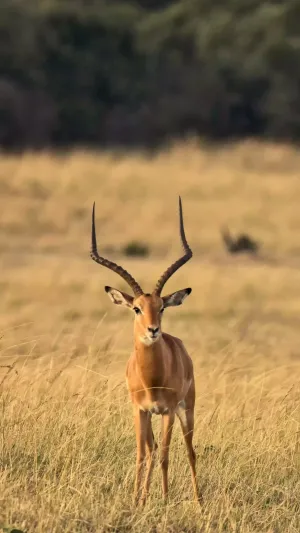The most animals that can be seen on the African Savannah must be all kinds of antelopes. Antelopes are all kinds of strange, but few people can distinguish their species. The following are the most common antelope species in Africa. Let's enjoy the most elegant and beautiful creatures on these African Savannah.
1. Antelope Giant - Eland
Elands is one of the largest bovids in Africa, and its weight can reach more than 900KG, which is larger than the average livestock cattle. Male Elands are large and strong, with thick wattles growing from their necks. Elands are actually members of the bovine subfamily and are more closely related to cattle.
2. Slender and straight sharp corners - Gemsbok
Although Gemsboks is not as huge as Elands, the pair of straight horns like swords can always leave a deep impression on people. Gemsboks is a member of the subfamily Antelope. This type of antelope often has exaggerated long horns for both sexes. Whether it is fighting the same kind or defending against natural enemies, it is a frightening weapon.
3. Waterbucks that wander the by the lake
Waterbucks also have a pair of slender, pointed horns, but not as straight as longhorns, and only male waterbucks have horns. Waterbucks generally live in lakes and swamps near water and like to eat waterside plants such as reeds. Waterbucks belong to the reedbuck subfamily, and many of this group of antelopes have similar near-water habits. The glands on the waterbuck can emit a strange musky smell, which can make many predators feel uncomfortable, so they rarely prey on them.
4. The symbol of East Africa - the wildebeest
Although wildebeests look a bit like cows, they are actually members of the subfamily antelope. Every year when the dry season comes, wildebeests in East Africa have to leave the drying grasslands. After long journeys and migrations in search of new food sources, this has also become an iconic landscape of East Africa.
The black-tailed wildebeests of South Africa and Southwest Africa are different from the wildebeests of East Africa in that the long hair under their necks is black, and they do not have seasonal migration behavior.
The group of wildebeests, the Antelope subfamily, its most distinctive feature is the short and curly double horns. In addition to wildebeest, there are many other species found in the African grasslands.
5. The champion of the high jump among the antelopes - Impala
Impala is the only species in the Impala family, and among the large and medium-sized antelopes in Africa, they have the largest number. It is estimated that there are more than 2 million impalas roaming freely in the African grasslands. Such a high "exposure rate" makes impalas often become prey targets of predators such as lions and leopards. However, the amazing athletic ability makes the impala often able to escape the pursuit of predators, especially when it can jump to a height of 3 meters, it can be described as a high jumper among antelopes.
6. Running to survive - Gazelle
Gazelle is a representative type of the subfamily Antelope, this type of antelope tends to have a relatively small and light body, and a fast running speed. The chase between gazelles and cheetahs is a timeless classic shot of documentaries about the African grasslands. Gazelle can run at a speed of 80-90 kilometers per hour. They and the cheetahs each represent the top speed among African herbivores and carnivores.
7. Gerenuk with a bizarre body
In the forested areas of East Africa, a strange-looking antelope, Gerenuks, is often found. They belong to the same subfamily of antelopes as gazelles, but their morphology has undergone great changes. Gerenuks have a proportionally elongated neck, which helps them feed on the taller foliage of the shrub. But once they encounter those leaves that cannot be reached by even stretching their necks, they can perform a set of "magic tricks". Just stand on the ground with two slender hind legs, grab the branches with their front hooves, and stand up straight to feed. At this time, the height of their heads from the ground is enough to reach about 2 meters.





